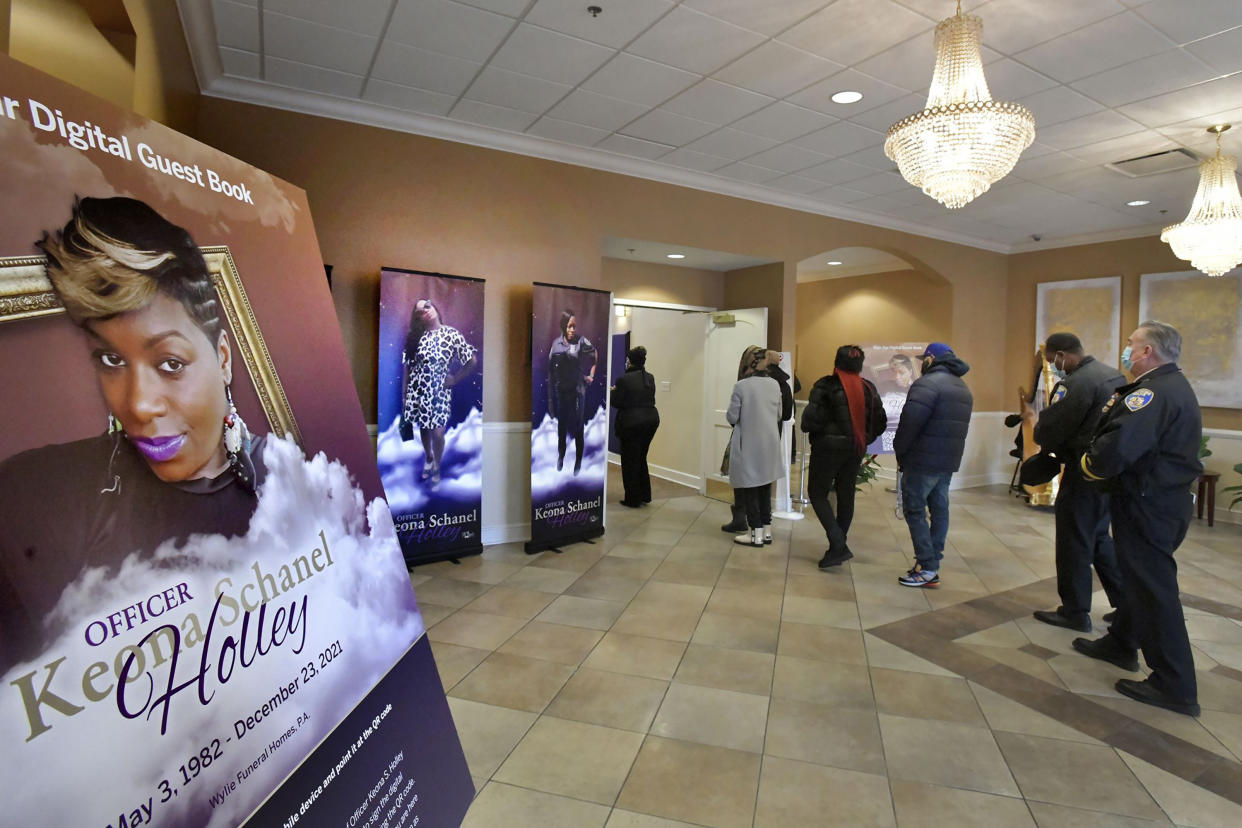Jury to resume Wednesday deliberations in trial of man charged in killings of Baltimore Officer Keona Holley, second victim

BALTIMORE — Jury deliberations in the trial of a man charged in the 2021 fatal shootings of Baltimore Police officer Keona Holley and 27-year-old Justin Johnson stretched through Tuesday and will resume Wednesday morning.
Jurors began deliberating Monday afternoon and continued throughout the day Tuesday, bringing to more than eight hours the total time the case has been in their hands.
Elliot Knox is charged with two counts each of first-degree murder, conspiracy to commit murder and firearms offenses stemming from the shootings, which happened over a 90-minute stretch in the early morning of Dec. 16, 2021. If convicted, the 34-year-old faces life in prison.
His trial, which began last week, spanned the better part of four days.
During closing arguments, Assistant State’s Attorney Kurt Bjorklund described the killings as “executions,” saying it was his belief that Knox pulled the trigger in both shootings.
Holley was ambushed and gunned down around 1:30 a.m. while sitting in her patrol car on an overtime shift in Curtis Bay. When she was shot, Holley’s car lurched forward over Pennington Avenue, rolled down an embankment and came to rest in a park. Two bullets struck her in the head, damaging her brain. The 39-year-old mother of four died in the hospital about a week after the shooting.
Around 3 a.m. the same day, Johnson was gunned down while sitting in his 1997 Lincoln Town Car in the 600 block of Lucia Ave., which is in the city’s Yale Heights neighborhood. Six bullets tore into his back, damaging his spine, lungs and heart. He died at the scene.
Scores of detectives descended on the scene of Holley’s shooting, soon learning that a license plate reader in the area had picked up the tag of a silver Hyundai registered to Knox. Cameras showed the car arrive and park around the block from where Holley’s patrol car was. Two men got out. The footage, played at trial, showed them walking in the direction of Holley’s cruiser and then running back toward their car.
Within hours, police located, stopped and detained Knox. After waiving his Miranda rights, he spoke to investigators in a small interview room at the Homicide Unit in Baltimore Police Headquarters.
After misleading police for about two hours by denying any involvement in the violence and claiming someone else had taken his car, he confessed to being present but blamed his accomplice for pulling the trigger in both shootings.
Travon Shaw also was charged with first-degree murder, conspiracy to commit murder and firearms offenses in both killings. A jury in October convicted him of all counts related to Johnson’s death. Shaw, 34, faces life in prison at sentencing later this month, when he is also due to stand trial on the charges stemming from Holley’s killing. His public defender previously declined to comment.
Knox’s defense attorney, Natalie Finegar, told jurors the prosecution couldn’t disprove her client’s story, and thus it was possible that he was telling the truth.
During his interrogation, Knox directed detectives to the house where he hid both guns used in the shootings: A Glock 22 handgun and an AR-style pistol. Police found them in a bedroom closet of the house, where the suspect said they would be, in a pair of backpacks along with gloves, masks and extra magazines.
Crime lab technicians documented and collected ballistics evidence from the scene of both shootings.
From the place Holley was shot, they picked up six .40 caliber casings. Police found another two .40 caliber casings and one .223 caliber casing around Johnson’s car.
Once police had the guns, a firearms examiner with the department was able to complete a full analysis of the evidence. Testifying as an expert, the examiner said the .40 caliber casings from both shooting scenes were “consistent” with having been fired by the Glock 22 recovered by police. He also said the same regarding the .223 caliber round from Johnson’s shooting scene and the AR-style pistol detectives got.
A police DNA analyst also testified that Knox and Shaw matched a profile of genetic material collected from the pistol. The analyst could not identify anyone’s DNA from the Glock 22.
______

